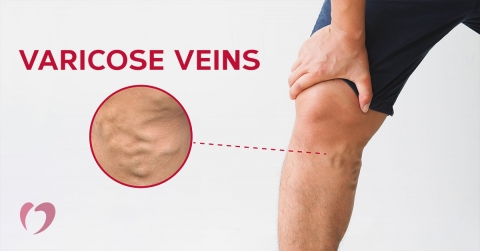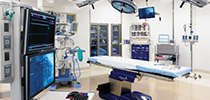Varicose Vein Stripping Procedures: What to Expect

If you’ve been diagnosed with varicose veins, one treatment option your doctor may recommend is a varicose vein stripping procedure, or vein ligation and stripping. Vein stripping removes damaged varicose veins from the legs. Through two or three small cuts at the top of the leg, surgeons will use a small wire to tie off or remove varicose veins. This procedure can treat symptoms of varicose veins and improve the appearance of the legs.
Varicose veins are swollen, enlarged veins that are typically seen in the legs but can appear elsewhere. Veins use a system of valves to carry blood back to the heart. When the valves or the vein walls become damaged, blood can pool in veins and create bulges and varicose veins that can be seen on the surface of the skin. Varicose veins are often seen as primarily a cosmetic concern. However, they are a part of a group of diseases called venous disease and can create itchy, painful, and swollen legs.
Some treatment options include wearing compression socks or having ablation or sclerotherapy procedures, which both work to collapse the faulty vein. When varicose veins create problems with blood flow or severe pain, more invasive vein stripping may be recommended.
How to prepare for the procedure
To prepare for an outpatient vein stripping procedure, patients are often asked to refrain from eating or drinking for six to eight hours before the surgery. Leading up to the day of surgery, your doctor may have you stop taking blood thinners, aspirin, or other medicines that may prevent blood clotting. Be sure to follow the specific instructions provided by your medical team prior to the procedure.
During surgery, you may be put under general anesthesia, or you may have a spinal anesthetic, which will numb you from the waist down. Most varicose vein stripping procedures take about an hour and a half, and patients are generally able to go home the same day.
What to expect after surgery
Most varicose vein stripping procedures are performed on an outpatient basis at a hospital or surgery center. Your timeline for returning to work and normal activity levels will depend on the nature of your work. Generally, three or four recovery days are required before returning to work and a week or two before strenuous activities.
During your recovery, your legs will be bandaged, and compression garments will be used to help reduce swelling and bruising. You will have stitches at the incision site, which may dissolve on their own or may be removed by your doctor a week or two after surgery. Pain medication may be prescribed for stiff and sore legs, which are an expected part of the recovery process for one to two weeks after surgery. Bruising is common in the first two to three weeks after a vein stripping procedure and is a normal part of healing after surgery.
To speed your recovery at home, be sure to get lots of rest. Avoid sitting or standing for long periods of time, and do not cross your legs at the knees while healing. In the days immediately after surgery, elevate your legs and use ice or cold packs for 15 to 20 minutes at a time to reduce pain and swelling.
If you had to stop any blood thinning medication prior to surgery, follow your doctor’s instructions on resuming them. Take any painkillers and antibiotics as prescribed. If given antibiotics, it is important to take the full course of the medication, even if you are feeling better.
If you have varicose veins and want to discuss treatment options, contact Oklahoma Heart Hospital and schedule an appointment with one of our vein disease specialists.




